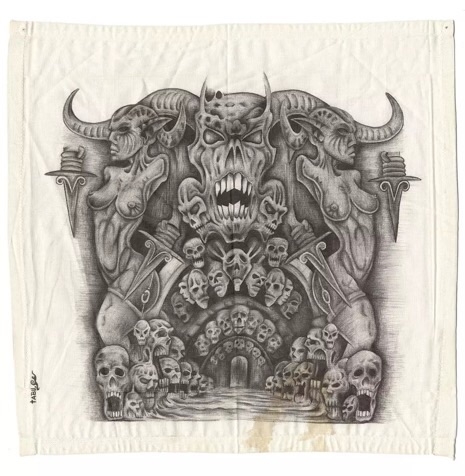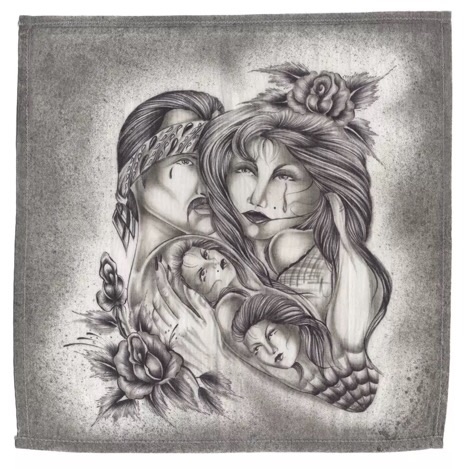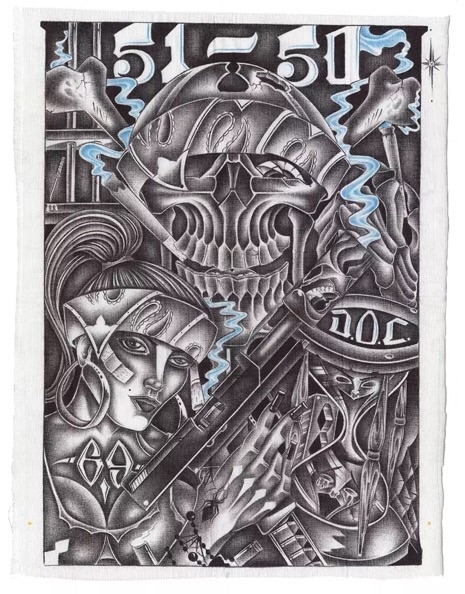
I’m always impressed by the human ability and impulse to create art, even under the most dire of conditions, and it’s difficult to imagine a artistically repressive environment than the U.S. prison system. I’m actually kind of baffled I’d never heard of paños, the Chicano handkerchief prison art curated here by Reno Leplat-Torti, a Marseilles artists who began collecting them from the Internet just a few years ago. The diversity in style and iconography is fascinating; from ethnic (bullfights and Aztec imagery) to heavy metal demons to pin-up pulp—-even hankies clearly produced for children, the work is incredibly intimate and complex. A brief history from Leplat-Torti’s site:
The art of paño, diminutive of pañuelo ( «handkerchief» in Spanish), marginal folk art, appeared during the 40’s in the prisons of Texas, California and New Mexico. Some fans believe that their origins in the French prison system set up in Mexico after the revolution of 1910. The detainees, usually from Hispanic origin, most of them illiterate, invent their own system of communication with the outside.
On simple regulatory handkerchiefs assigned by the prison administration, they draw in pen with the recovered ink, wax or coffee. Thereafter, in the states of south-western United States this practice becomes a kind of prison traditional art and spreads to the rest of the country.
The Reno-Leplat Torti Collection now boasts over 200 paños, and a genre previously rarely seen by anyone but Chicano prisoners and their families has now been featured in galleries in Milan, Copenhagen and Paris. Torti is currently working on a documentary on the subject.


More after the jump…





